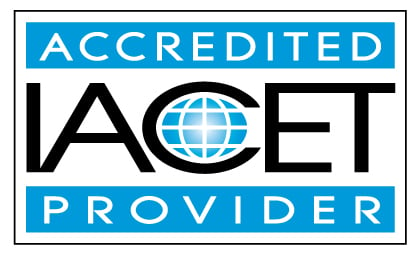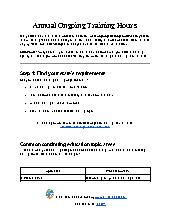Texas Teacher 24 hours Annual Renewal 2nd Year
Teachers and caregivers, complete all of your annual training requirements in one course! This course is designed to be completed as teachers' 2nd year of annual renewal. Topics are more in-depth and advanced to complement educators growing knowledge and experience.
This 24-hour training contains the following annual training topic requirements for caregivers:
- Prevention, recognition, and reporting of child maltreatment
- Recognizing and preventing shaken baby syndrome and abusive head trauma
- Understanding and using safe sleep practices and preventing sudden infant death syndrome (SIDS)
- Emergency Preparedness
- Preventing and controlling the spread of communicable diseases, including immunizations
- Administering medication
- Preventing and responding to emergencies due to food or an allergic reaction
- Understanding building and physical premises safety
- Handling, storing, and disposing of hazardous materials
- Guidance and discipline
- Age-appropriate curriculum
- Teacher-child interaction
Requirements necessary to provide care for children of all ages, including those younger than 24 months of age
Course format:
- Online training: 24 hours of online self-paced training. Online training completion will result in a certificate of completion and 2.4 CEUs.
By the end of this training, the learner will be able to:
- Identify strategies for providing appropriate care for infants and toddlers with chronic health issues
- Identify strategies to promote cultural diversity and acceptance in the child care environment.
- Identify appropriate supervision practices for children during transportation and field trips.
- Demonstrate understanding of the components of an emergency preparedness plan.
- Demonstrate an understanding of the importance of establishing realistic expectations for behavior.
- Demonstrate an understanding of the most effective way to listen to a child.
- Explain the consequences for children experiencing negative interactions and vocal tones in the classroom.
- Identify guidance and discipline strategies to use with various behavior problems.
- Identify the features of effective instruction for print knowledge.
- Give examples regarding the prevention of illness in child care programs
- List parts of active supervision.
- Identify strategies for the prevention and control of infectious diseases (including immunization)
- Define shaken baby syndrome and abusive head trauma
- Identify strategies and practices for preventing shaken baby syndrome and abusive head trauma in the child care setting
- Identify safe practices in the prevention of and response to food and other allergies in the childcare environment.
- Identify the importance of language and literacy development in early childhood.
- Demonstrate an understanding of emerging literacy skills in young children.
- Identify strategies to support language and literacy development in early childhood.
- Identify ways to handle hazards and bio-contaminants
- Describe how caregivers can help to prevent sudden infant death syndrome.
- Describe the use of safe sleep practices.
- Define culture and cultural competency
- Demonstrate understanding of the content and implications of environment regulations and supervision requirements
- Identify theorists of guidance and discipline
- Demonstrate an understanding of how the community in which a child lives influences development
- Demonstrate an understanding of how learning experiences develop emerging skills
- Demonstrate an understanding of the impact of culture and diversity in relation to school readiness.
- Demonstrate an understanding of how positive guidance promotes sound social and emotional development.
- Give examples of strategies in responding to typical child care situations.
- Demonstrate how to develop policies and procedures that promote good hygiene
- Describe the proper procedures of medication administration including: authorizations forms, documentation, storage, training, emergent issues, and resources.
- Describe the components of emergency preparedness in the child care setting.
- Identify the signs of child abuse and neglect.
- Explain the historical context of emergent curriculum from its origins in the Reggio Emilia approach.
- Define the Cycle of Inquiry and how it can be used to plan emergent curriculum.
- Demonstrate an understanding of emergent curriculum.
- Identify strategies to ensure appropriate infant and toddler supervision.
- Define what is an emergency and the legal requirements for emergency preparedness for child care professionals.
- Identify best practices when communicating with emergency personnel.
- Define the term multiculturalism and how it relates to the child's environment.
- Identify common interaction strategies to help promote a positive classroom environment for young children.
- Define Building and Physical Premises Safety.
- List the steps to complete a report on abuse and neglect.
- Demonstrate an understanding of proper food storage and preparation.
- Criteria to earn CEUs:
- Certificates are awarded when the following criteria have been met by the learner:
- Class has been paid in full
- All material has been reviewed
- All review questions and final test have been completed with a passing score of 80% or higher.
- Learning Assessment Method:
- Learners will be assessed through questions after every section is completed. Learners will not be
allowed to proceed to the next section of the training until all questions have been answered correctly.
Learners will be presented with a final test composed of true/false and multiple choice questions.
Upon successful completion of the training, learners will receive their certificate by email.
- Learning Methodology:
- Online material will be presented in the form of slides,
accompanied with speech. Videos will be used to demonstrate ideas and concepts. Charts and tables
will be used for illustration.
- Logistics/Required Technology:
- A stable internet connection is required for the completion of this course. Users are highly encouraged to take their online course on Google Chrome on either a laptop or desktop computer. Speakers and/or headphones are also required to hear speech.
- Payment Policy:
- Payments need to be made in full. No refunds will be issued after starting the class.
- Proprietary or conflict of interest disclosure:
- Unless otherwise stated in the course description none of H & H subject matter experts and editor has any conflict or proprietary interests related to the material they prepared in this course.
- Support Services:
- Please visit our contact us page
You are purchasing a session of an online training that includes online assessments. Your certificate will be emailed to you once you pass the final exam with a passing grade of 80%.
Your certificate will bear the name you provided to us when you signed up. For support and questions regarding the material presented in this class please contact us at info@childcareed.com. Please consult our frequently asked questions page for other questions or feel free to contact us.
No prerequisites are required for the completion of this course.
Hours breakdown
Topics / Categories
Group AdminInfant/ Toddler Educators
Preschool Educators
School-Age Providers
Health and Safety
Content Areas
Social/Emotional
Basic
Health, safety and nutrition
Curriculum and Environment
Child Guidance
Latest Jobs
- UNITED STATES OF AMERICA - Maryland
- UNITED STATES OF AMERICA - Alabama
- UNITED STATES OF AMERICA - Alaska
- UNITED STATES OF AMERICA - Connecticut
- UNITED STATES OF AMERICA - Nevada
- UNITED STATES OF AMERICA - Texas
- Need Annual Training Hours Texas?
- Annual Training in Texas
- Texas Career Starter Bundle
- Savings on Annual Requirements
- Back to School!
- Navigating with Limited Resources: Support for Texas Child Care Facilities
- Child Care Licensing in Texas: What You Need to Know to Stay Compliant
- Child Care Licensing in Texas: Requirements, Updates, and Compliance Tips
- Navigating the Maze of Child Care Licensing in Texas
- How Can Texas Child Care Providers Save Big on Annual Training?
- 🍼📋 What Do You Need to Work in Childcare in Texas?
- 📚 Which Trainings Are Required for Childcare Staff in California?
- Texas Directors: Complete Your 30 Annual Hours Online
- Early Childhood Education in Texas


